







In the context of the actions and interventions to the public space by GADAK / ΓΑΔΑΚ (Humanitarian Crisis Illogical Management Bureau), Free Strefi is an action that took place in the basketball court of Strefi hill, commenting on what happened there in recent years. From the announcement of the recreation of the hill, until its cancellation recently, the hill was filled with policemen guarding the construction sites that had been set up, blocking off the public space. Until now, countless incidents of police brutality, predation and arbitrariness have occurred, simultaneously with the consequences of the sloppy work made by the contractors and their crew. At the same time, residents and collectives resisted and won several battles against these events, while very often actions were organized against policing, abandonment and blockades.
In such a gloomy situation, the idea was created to carry out a symbolic cleansing of the area of the basketball court, which is clearly one of the "victims" of the deliberate depredation of the previous years, depredation that, as it turned out, was done as an absolutely punitive response from the goverment and municipality, but also to make the recreation plans seem necessary and redeeming.
Between performance art and political protest, corresponding to several that have been done by collectives and residents, the cleansing was recorded to be combined as audio-visual material with a mapping of the hill in relation to what has happened there in recent years. The works of the crews, their failures, police brutality, blocked areas, as well as the points with a strong and permanent police presence will be recorded on the map, which will be a record of the history of this attempt of state imposition on the region in general.
Photos and video of the action by Michailangelos Vlassis-Ziakas








Pendulum is an older work, back from 2017, depicting an abandoned setting for a conference in the context of the 4th International. As an imaginary scenario, the work implies a sudden cancellation of the conference, where the organizers escaped the danger of persecution. A historic reference used as a parabole, generating connotations towards the unfulfillment of utopianism, the grand narratives of the 20th century, and the need to re-examine all the above in today's terms.
Initially created as a 3d model on outdated software, the work was abandoned as a dead-end sketch, especially after Ahmet Öğüt presented a similar sculpture a few months later. In 2023, during an extended revision of older projects, an idea was to finalize the work as a web 3D instance. The file had to be converted several times in order to be opened, edited, and uploaded, which resulted in a series of glitches, artifacts, flipped polygons, and loss of its textures. Although it was possible to repeat the process and have the model corrected, the distorted version was selected as the final work, as its defects, in a way highlight the narrative's concept.
The work was finally uploaded as a virtual installation in memory of Ilya Kabakov, on the 28th of May 2023, a day after his death. It was presented at the Wrong Biennale's sixth edition, as part of the "Net Art Died But Is Doing Well" pavilion, curated by Fabio Fon and Soraya Braz.
View the work here.




[not] an act of appropriation
by Daphne Dragona
A part of Villa Savoye is sinking, the sea has a little wave, a bridge is visible on the left and the horizon is almost clear. Flooded, the work of Michalis Zacharias is a real-time simulation of the installation Flooded Modernity of Asmund Havsteen-Mikkelsen as it was set up in Vejle fjord in 2018. The azimuth coordinates of the sun as well as the current time and weather conditions of the area are mentioned on screen, and the light of the landscape changes accordingly.
Zacharias' project Flooded involves an act of appropriation, but has its own particular features, going beyond the act itself. Unlike most artworks embracing appropriation to tackle issues of authenticity, originality, or authorship, Zacharias rather wanted to comment upon the intervention of Havsteen-Mikkelsen and create a digital living memory of it. Flooded Modernity, which in turn was also based on an act of appropriation, offered Zacharias an ideal story, a 'pseudo-narrative', as he calls it in his practice. The collapse of Villa Savoye implied a collapse of the modern world along with its spirit, values, and beliefs in innovation, acceleration, and progress.
Zacharias reached out to Havsteen-Mikkelsen as the two artists shared a common interest in the role of modernist architecture in shaping the promises and costs of modern and contemporary life. As Havsteen-Mikkelsen reminds us when asked about his reference to Villa Savoye (1931), Le Corbusier interestingly designed this house having the car in mind. Praising the efficiency of modern engines, Le Corbusier was interested in building a residence that with a similar efficiency, could offer leisure, comfort, and access to nature. The house itself, as one can recall, was elevated in pillars and detached from the ground, within a natural landscape but also separate from it. The modern era loved engines, systems, and automation and saw 'man' as superior to 'nature'.
Throwing a fragment of this famous Villa into the water, with the 1:1 model that he created, Havsteen-Mikkelsen rendered the vanity and arrogance of the modern world obvious, bridging past to present, and raising questions for a period of algorithmic governance and climate crisis. What is the footprint of comfort for western modern society? What does the call for optimization mean and for whom? What lies on the other side of technological innovation and economic progress? The images of the installation captured the sinking Villa with some of Vejle's landmark architecture in the background. Due to the scale of the intervention and the perspective of the photos taken, there is no inhabitant on sight; only the sea and the architecture. As a model of a world is sinking, modernism is carried away by the stream. Havsteen-Mikkelsen's act of appropriation was at the same time an act of symbolic profanation. An urge for new ideals, values, and politics on a societal and environmental level was implied.
Five years later, Zacharias created a simulation of the in situ intervention based on the images that circulated on the internet in the summer of 2018. Some of the buildings can be seen in the far background, but the city is mostly missing from the frame which makes the scenery more generic. Interestingly despite the local data added, a sense of emptiness and timelessness now prevails. The little waves build new associations as one cannot help thinking of the life-threatening floods of last summer. A more literal interpretation, thus, emerges, possibly one that none of the two artists had as their principal goal. Yet, except for the sea, everything else stands still and viewers find themselves in the place of an observer. In this virtual environment, one cannot intervene or interact. One is only allowed to rotate the mouse just like it happens in 3D programs, and watch the villa floating, surrendered to the sea. It feels like there is no agency in the same way that there seems to be no agency in real life, in the era of climate catastrophe.
Reflecting upon the different time periods of Le Corbusier's building, Havsteen-Mikkelsen's installation, and finally his own appropriation and simulation, Zacharias captures the melancholy and temporalities of failure. Flooded carries within it the illusions and forgotten expectations of Modernism as well as the lost hopes of the post-modern world to combat and reverse climate change. The soft light and relative stillness of the simulation manifest the atmosphere of a time of a prolonged generalized crisis and environmental catastrophe. Flooded, ultimately, conveys how it feels when what is left to fight for with regard to climate change is mostly mitigation.
Visit the online simulation of "Flooded Modernity" here.
A conversation between the two artists, along with archival footage and animations of the simulation here.












Modernism in the shadow of the climate crisis. Prospekt presents Asmund Havsteen-Mikkelsen and Michalis Zacharias' dystopian-poetic approach to the challenge of time through the lens of architectural history.
With 15 architectons and 30 photographs, visual artist Asmund Havsteen-Mikkelsen moves into Prospekt, and in collaboration with the Greek visual artist Michalis Zacharias, a simulation of Havsteen-Mikkelsen's work Flooded Modernity from 2018 is shown. This part is also shown simultaneously in Athens.
Havsteen-Mikkelsen and Zacharias' common focal point has been the preoccupation with modernist utopias and the frustration at the absence of utopia today. We still live in a space defined by modernity (with all its unintended consequences, such as global warming, biodiversity crisis, social inequality, enormous resource consumption, etc.), but without the imaginative spirit and energy that characterized early modernism.
The aim of the exhibition is to focus on the status of utopia today. How do we get on with creating new ones? What might a utopia look like that not only involves art and architecture, but also involves non-human nature?
The exhibition's title Revisions and Postscripts refers to this movement - the works are both revisions, where we try to look again with new eyes, and postscripts to an already finished concept. The media through which the works emerge point to this new status: they are based on today's digital information and computer technology, while at the same time using completely ordinary materials. A field of tension between different media that points to how the utopias of the future will be both concretely sensual and digitally immaterial.








"Not long before I quit, the students and I saw a white cockroach in the kitchen. It was such an impressive find that it interrupted the class and made us forget all about the exams, the school of Fine Arts, the sculpture casts, and charcoal. We closed it in one of those containers where we put water for the brushes and we were examining it throughout almost the rest of the class. When I got home, I looked for information on cockroaches with albinism and found that they didn't exist; its whiteness was due to a phase that cockroaches go through, for a few hours, when they change their exoskeleton. Because it lasts only for a short time it's pretty rare to see."
The project "The White Cockroach - A charcoal drawing class" by Panos Sklavenitis and Michalis Zacharias will take place at the Back to Athens exhibition, in the building that until recently housed a well-known drawing school where the latter worked as a teacher for about twelve years.
Today the two artists, while in their personal work they make use of contemporary media and practices, continue to make a living mainly through their capacity as drawing teachers; they are colleagues in a tutoring school that prepares candidates for the entrance exams of the fine arts schools of Greece, and they make turns back in time to teach their students "charcoal", intensively training those candidates in an outdated subject which is necessary for their admission to the Greek university but which has nothing to do with what they will be asked to deal with immediately after their admission.
The project will consist of a "drawing lesson" that the two artists will conduct together in the exhibition space - a final lesson for Zacharias in this space - and its outcome and remains will be exhibited afterwards, together with recorded material, as an art installation.
For the needs of the course, the space will be transformed into a drawing workshop again; there will be easels, boards with drawing papers, charcoals, erasers, pencils, etc. The composition that will be used as the subject for observational drawing will be consisted of the traditional elements used in tutorials for this reason (such as sculpture casts, textiles, vases, etc.), but will be synthesized in such a way as to create an in situ sculpture: a monstrous creature with an animal body and heads made of plaster casts of ancient Greek gods.
The "students" who will participate will come from a selection of current students of the artists as well as old students who are now students, post-graduates, and graduates of fine arts schools in Greece, and even well-known visual artists. Among them, other friends and close collaborators of Sklavenitis and Zacharias will help in the course.
In reality, of course, it is not about a lesson but about an action that will try to weave a mesh of collective experience around this unique condition; to highlight the personal stories but also the aesthetic and socio-political meanings that this - perhaps unique in Europe - anachronistic system of admission to universities of fine arts.
Credits:
"Subject" composition by Mihalis Ersotelos
"Models": Ilias Mpiskemis and Kat Schiza
Ending song(moiroloi) by Dimitris Ameladiotis
Video footage by Mihalis Ersotelos and Georgina Kapralou
Photos by Stephanos Chandelis, Mihalis Ersotelos, Dimitra Markopoulou, and Panos Sklavenitis
Participants:
Michel Abajoli, Dimitris Ameladiotis, Natasa Bellou, Stephanos Chandelis, Errikos Chatzialexiou, Katerina Chatzigianni, Vera Chotzoglou, Alexandros Christoforidis, Vasso Daskaroli, Ilya Dervou, Mihalis Ersotelos, Alexis Fidetzis, Eva Giannakopoulou, Aggelos Goumas, Dimitra Gritzali, Naya Ioannou, Mary Joyce, Lena Kaouki, Georgina Kapralou, Nausika Keke, Eva Koliopantou, Nikos Koniaris, Katerina Korre, Eleftheria Kotzaki, Konstantinos Koulakmanidis, Dinos Koutsoukos, Zoe Kyriakou, Despoina Lakoura, Danai Lountzi, Panagiotis Makrandreou, Aggelos Maniatis, Anna-Maria Manolakaki, Dimitra Markopoulou, Kostas Mertzanakis, Ilias Mpiskemis, Lia Nanou, Anastasia Ntioudi, Periklis Oikonomou, Anna Papadopoulou, Konstantinia Sakka, Kat Schiza, Xanthi Skarla, Zoe Sklepa, Fotis Tasopoulos, Petros Tasopoulos, Christina Terzaki, Alex Tetsis, Christiana Tzanidaki, Karmela Tzintzi, Haris Vlahos, Maria-Agapi Xenaki, Markella Xylogiannopoulou,Yiannis Yigourtakis, Andreas Zacharias, Elena Zambeti.












Exarcheia Square / A New Vendôme Column is an alleged proposal for the erection of a monument in the area's central square, which is basically a duplicate of the Vendôme Column in Paris. A project that is reversing the history of the demolition of the column during the Paris Commune in 1871, is depicted as a typical set of architectural plans and presentations, rendering images of the area with the monument, along with the installed panels blocking the access to the square. In an ironic pseudo-narrative, the erection of the monument signifies the occupation of public space from the New Democracy state, as a symbolic establishment of government dominance towards the radical, far-left, anarchist aura of the district.
The column is almost a replica of the Parisian monument, with its main difference being the statue on top, replacing Napoleon with Apollo, the Olympian deity recognized as the god of the Sun and light. Associating the god with the "cleansing" of the "darkness" of the area, the supposed monument comically projecting a romanticized notion of the harsh and revanchist policies of the New Democracy government during the last few years.
View the project here.








"Survival-module is a supposed system of cylindrical modules, designed for the construction of underground shelters. It is also a trademark for a pseudo-company that profits from the fear and insecurity of its clients. Recent events, from the worldwide health crisis to the war in Ukraine and the financial implications that followed, construct a dystopic condition, perfect for exploitation.
The installation presents a corporate kiosk from a startup company. Through its website, the modules it offers are presented ideally and emphasize their customization and versatility. Ranging from a simple and low-cost safe room to a fully equipped fallout shelter with various amenities, the modules can serve every budget and ambition."
Text by Foteini Vergidou
Visit the project's website here: www.survival-module.com








"When you sang hymns to the motherland,
That was your love,
For her your harp brought forth
A heart - enrapturing twang . . ."
To Raphael Eristavi, Soselo (Josef Stalin)
In 1932 Stalin issued his notorious decree "On the Reconstruction of Literary and Art Organisations", which was used as the main directive by the Ministry of Culture of the USSR. As a result, the iconic Soviet avant-garde halted suddenly, and Soviet art drifted towards Socialist Realism. The new style had to be simple, comprehensible, realistic, and representational. All modernist expressions declared decadent, bourgeois, and associated with capitalism.
This performance/installation is depicting a kiosk with Soviet souvenirs, in an imaginary scenario where the above sudden turn in cultural production is taking place. The sculptors are carving the souvenirs, in order to transform them from constructivist/cubist to busts of Stalin himself. In front of them, a larger bust of Stalin is used as a reference, with its position and stature seemingly implying that he also oversees the work.
Through this fabricated narrative representing the cultural transition between soviet modernism and neo-classical Stalinist socialist realism, the work is commenting as an allegory on the dark fate of both the October Revolution and the Russian avant-garde. Associating utopias with modernism and totalitarian politics with conservative aesthetics, this project emphasizes on Stalin's absolute control over Soviet cultural production, along with the drift towards aesthetic standards related to romanticism, a combination which led to the cultural phenomenon that we now address as "Totalitarian Kitsch".
The work is also a tribute to the Sots Art movement, and especially the artists who challenged with great courage the Soviet cultural status quo, marked by Stalin's legacy even after his death.
The work was presented at the group exhibition "Revolting Bodies II", which was curated by Alexis Fidetzis and hosted by Atopos CVC.
Performance by Stathis Halkias and Savvas Tsimouris
3d prints by 3dHub
Special thanks to Hristos Hantzis, Nana Sachini and Panos Xenakis
3d scan/model of Stalin's bust from Gorki Leninskiye Museum by Boris3dStudio:
https://cults3d.com/en/3d-model/art/stalin-bust-from-gorki-leninskiye-museum
https://cults3d.com/en/users/Boris3dStudio/creations












The new series of works by Michalis Zacharias is inspired by the relationship between avant-garde and politics through imaginative scenarios of invalidating both the modernist spirit and the political utopia. The works are narratives of pseudo-events, which are "designed" in order to give either a cynical, or an ironic, or a reconstructive dimension of real events. Avant-garde propaganda machines, postmodern constructions-caricatures of agitprop aesthetics, photomontages referring to Eastern Bloc monuments, fabricated events related to the degeneration of the modernist spirit, are the general descriptions of this new body of work, which consists of four installations and thirteen digital prints.
All the works are essentially historical detournements, as they are inspired by real-life events that are diverted one way or another to generate a more pertinent comment on the abolition of the radicality that determines the avant-garde art and politics. In the fake news era, the ease with which narratives are constructed offers the possibility of such diversions. With the new media potential to construct false pseudo-narratives (3D graphics, digital photomontage, archival and public domain images), an attempt is being made to post-visualize history, either as alleged archival material or as supposed modern reconstructions and events, all related to the aforesaid concept.
For the current exhibition, which constitutes a part of the wider body of Zacharias' work on the decadence of the modernist utopian spirit, the artist chose for his show those certain ideas that contain the political element, but are also determined by the apparatus of historical reconstructions as mentioned above, in order to refer more prominently to the present-day phenomena we experience in contemporary mainstream politics; from populism and the normalization of political struggle to fake news culture, but also to the crucial question of how we perceive utopia a century later, through a notion of dystopia and not as a futuristic imaginary, but rather as a projection to history itself.
Taken from the press release of the solo exhibition "Authentically Appealing", presented at the Ileana Tounta Contemporary Art Center.
















In 1993 Martin Kippenberger claimed the cement skeleton of an abandoned building complex located in Syros, Greece. For three years the unfinished abattoir was used as a site for numerous contemporary art projects, under the label MOMAS(Museum of Modern Art Syros), a name chosen as a pretty obvious, ironic statement towards art institutions and museums. An anti-museum, with no walls and in a remote location, became an ideal setting for all sorts of independent site-specific projects by Cosima von Bonin, Hubert Kiecol, Stephen Prina, Christopher Wool, Lukas Baumewerd, Michel Majerus, and other artists, all invited by Kippenberger.
MOMAS Appendix is a web project/archive which began as a 3d reconstruction of the original site, in order to be uploaded to 3d Warehouse and be available for download both as a plain 3d model and also as a geo-located KMZ file, which allows users to place it in the exact position through the Google Earth platform. The initial model was developed further into a series of variations, more realistic, along with the gradual addition of its surroundings.
After the development of all the above 3d variations, a model including only the buildings was extracted from one of the files, in order to be placed as a test, in several open spaces all over Athens, by "hijacking" augmented reality technology. Among several suitable/signified open spaces in Athens, Filopappou hill was selected for the final re-installment of the virtual reconstruction, a selection based on its significance as a landmark, its elevated open spaces, and of course its proximity to the Acropolis.
You can view the project here












Zacharias in most of his work re-valuates history, mixing historic and cultural elements from separate backgrounds in order to make statements. Extracting images from their context, juxtaposing elements, and recently making pseudo-narratives, are attributes that define his art-practice.
His work is basically an assemblage of multiple data, separated by a distance in time and conceptually making contradictions or irony. Archive images appropriated, photo-montage, the design of signified objects, facts and events leads to narratives that review the past critically towards the present.
Strongly depended on aesthetics, his works imply below the form a critique, often self-referential towards art. His main interest is historical memory and how it can be developed through transformations, distortions, and displacements in order to make a comment on history itself.
From the press release of the group exhibition "Comfort Blast", London 2019











"The impulse of modernity, we are told on the other hand, is exhausted; anyone who considers himself avant-garde can read his own death warrant. Although the avant-garde is still considered to be expanding, it is supposedly no longer creative. Modernism is dominant but dead."
Modernity-An Incomplete Project, Jurgen Habermas
Although modernism as an impact dominates western culture and most of its characteristics can be traced as echoes everywhere, it appears that these echoes are filtered and reflected in a way that the Utopian impulse-to use Fredric Jameson's description of the modernist vision-seems nowadays to be expressed in a neutralized way, unarmed and stripped of its radicality.
We have witnessed an avant-garde nostalgia in recent years, a more direct revision of modernism, aesthetically closer to its origins, and all the above observations seem more legitimate than ever. "Mostly Harmless"* is a body of work that deals with this subject, comments on the historical value of modernism and especially on how we perceive it and redefine it.
The works are "notes", which vary from printed pages to large scale prints and installations, where a system of beliefs based on modernist visions as doctrine is recognized, along with the awareness of the post-modern identity that defines contemporary culture. As contradictory as possible, in a dipole explained simply as modernism versus reality, a juxtaposition is created, which sets the aesthetics of modernism in a specific context, where the vision behind the aesthetics dissolves in a mixture that produces irony. Forming always a pair of data, an iconic image or notion of the avant-garde and a surrounding context that tends to absorb the image's radicality, the works generate an annotation on how contemporary culture integrates modernism.
*"Mostly Harmless" is the description of planet Earth in The Hitchhiker's Guide to the Galaxy, the electronic space-travel guide in the series of books "The Hitchhiker's Guide to the Galaxy" by Douglas Adams.
Taken from the press release of the solo exhibition "Mostly Harmless", presented at the Ileana Tounta Contemporary Art Center.
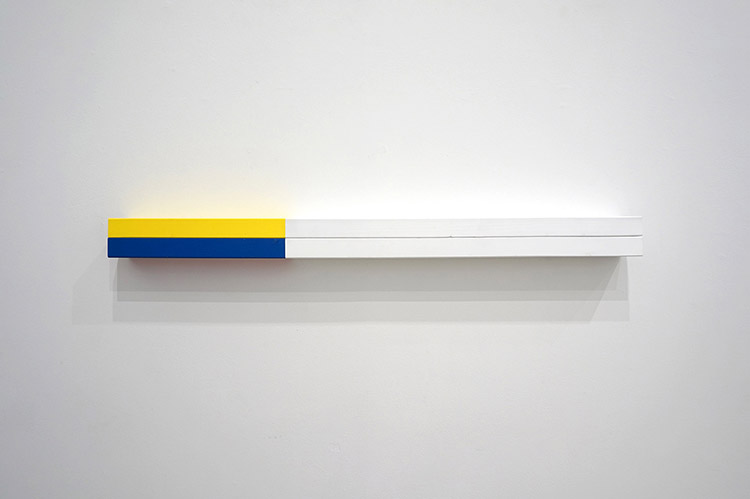
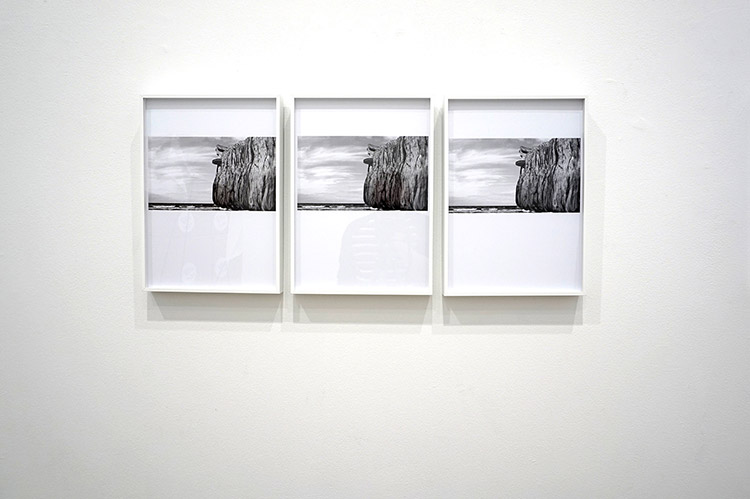
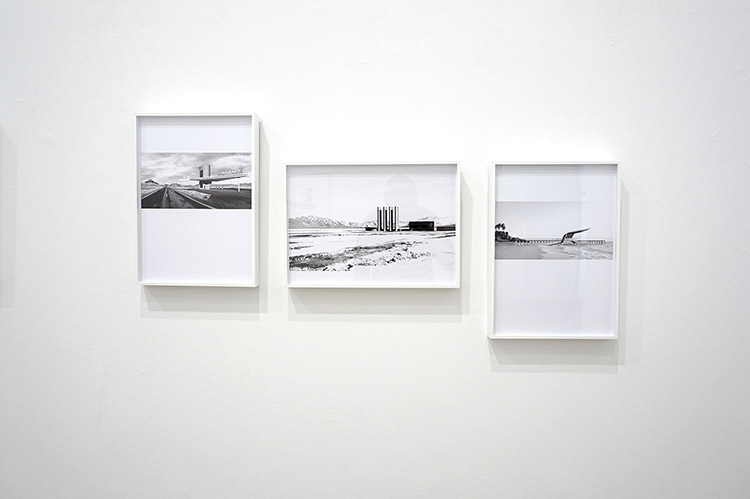
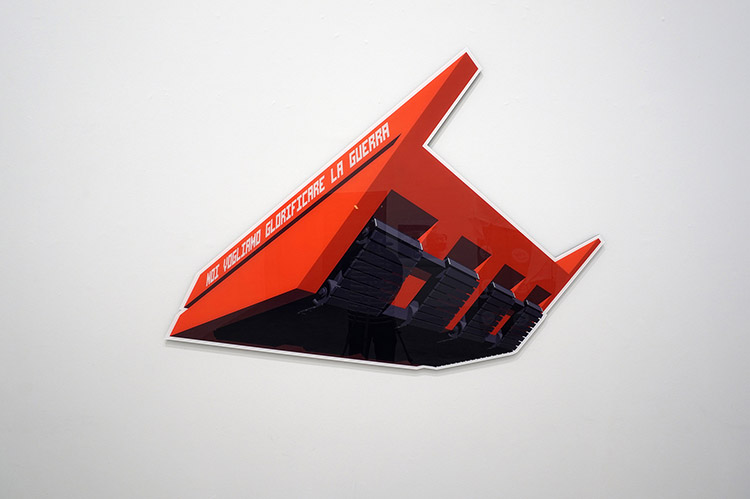
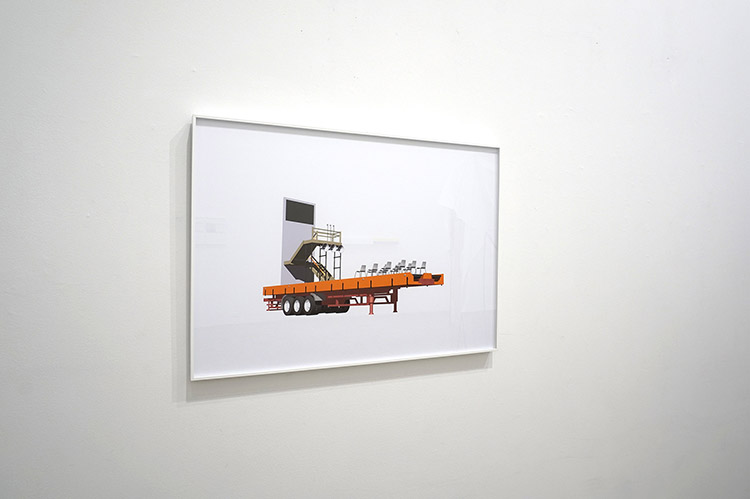
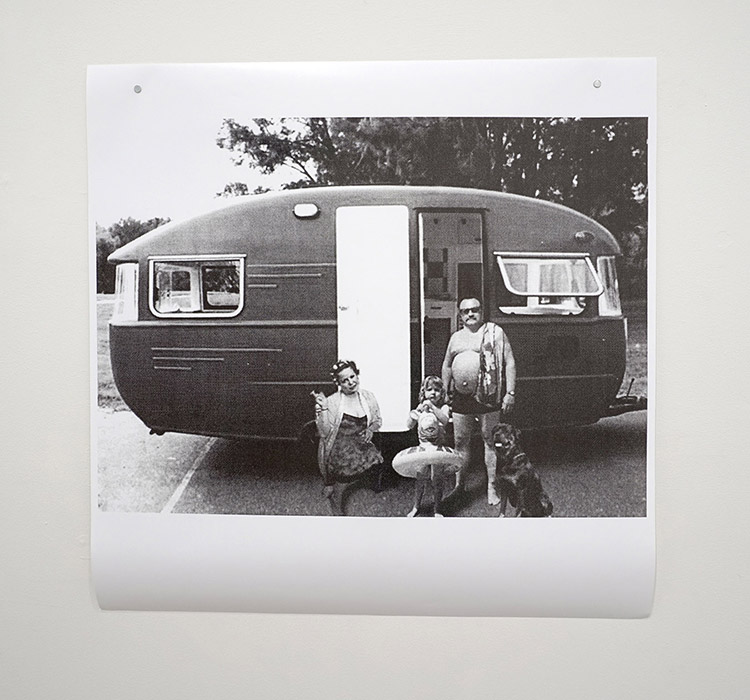
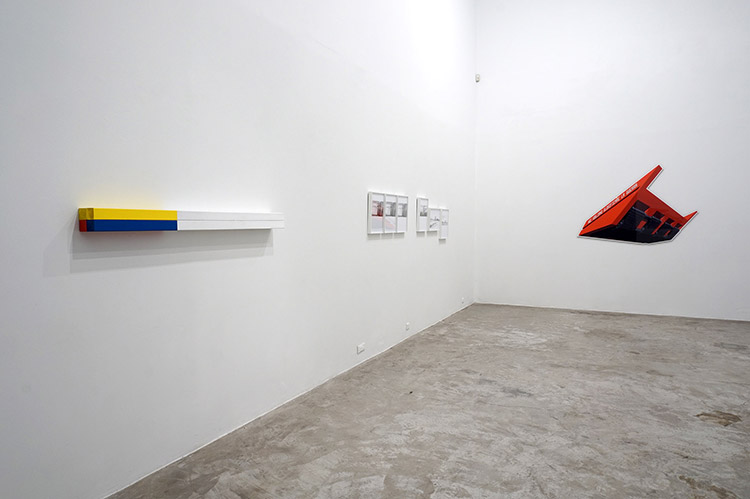
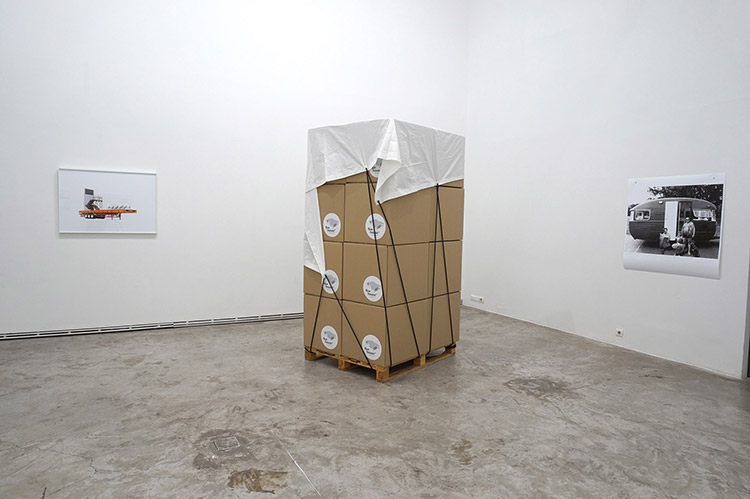
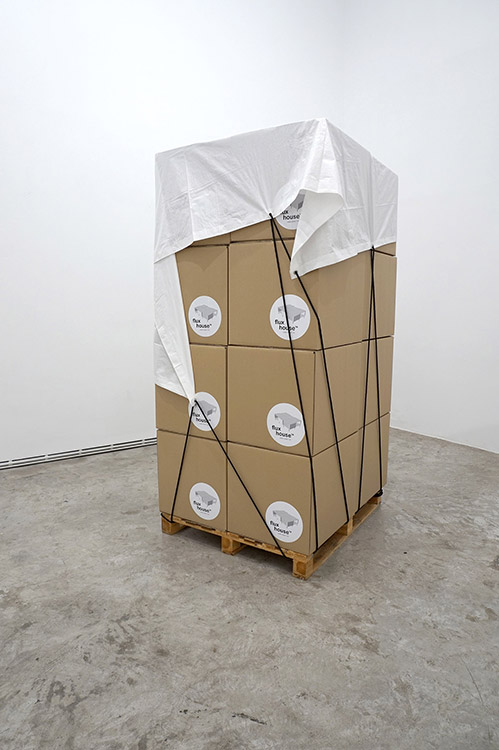
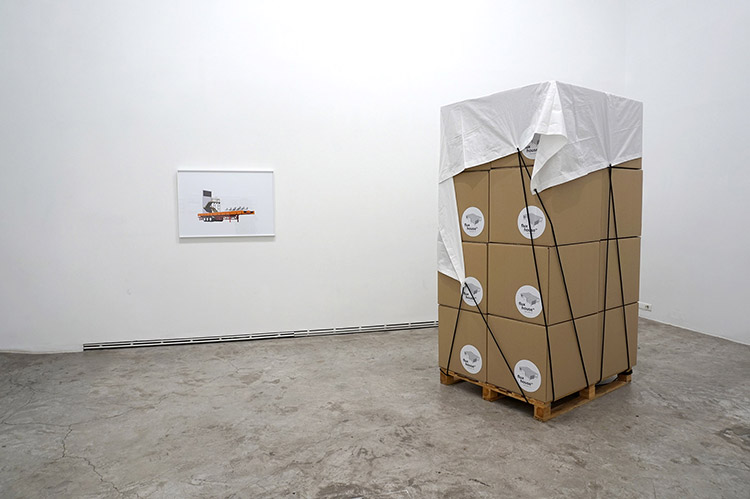
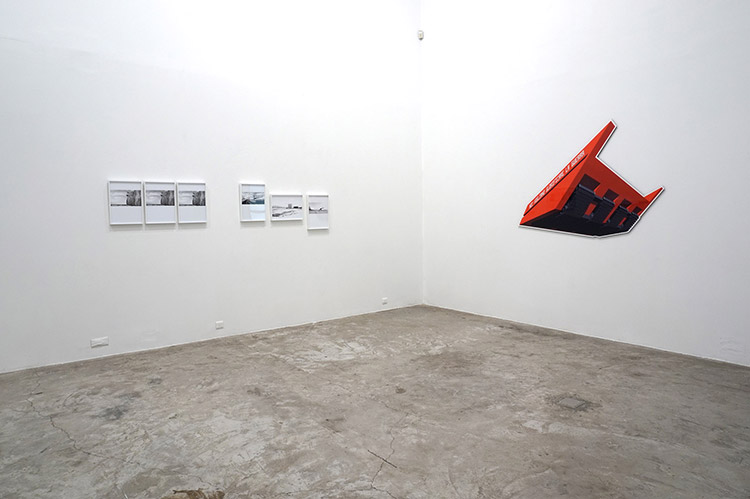
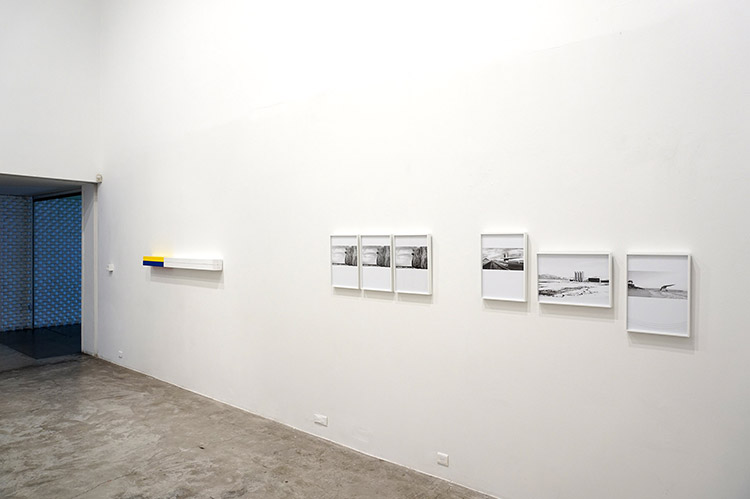
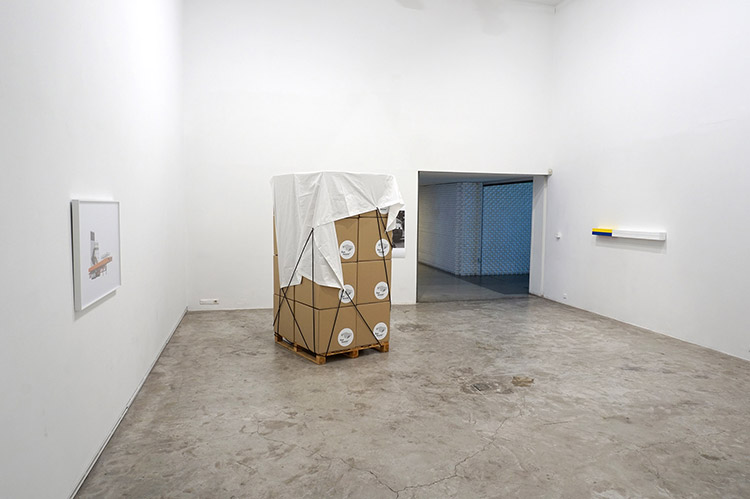
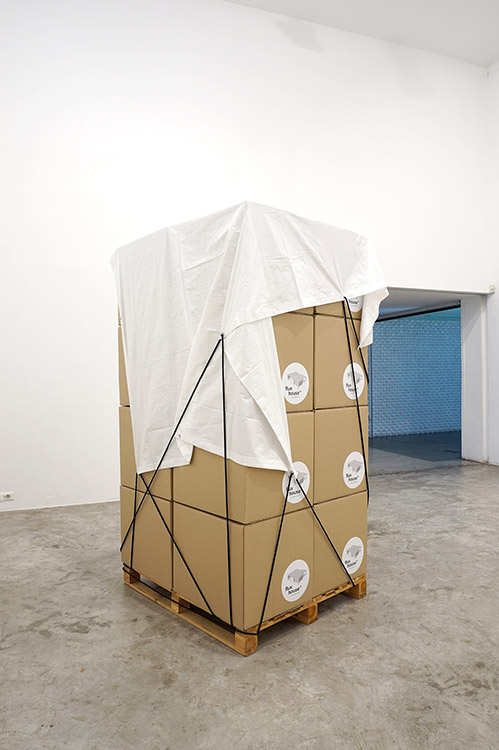
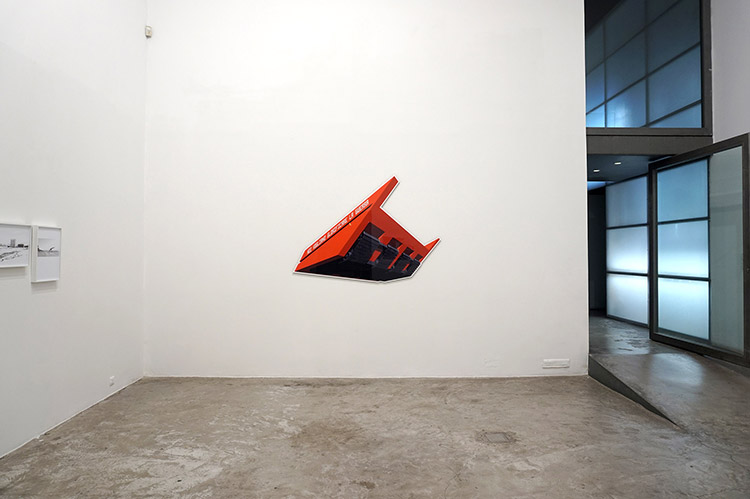
Michalis Zacharias' series of scanned black and white drawings that present images of destruction and desolation which he, as a ragman himself, collected from newspapers. In the particular drawings, which were produced in A4 size in 2001, the artist is examining both the stylistics of post-historical image and its infectious spreading."
"Six years later, Zacharias' frozen images bring a strange sense of contemporaneousness-utterly timeless and perpetual."
Christoforos Marinos on Zacharias' work in the catalogue of Meatspace / Pro-Taseis Action Field Kodra 2007
"Artists today program forms more than they compose them: rather than transfigure a raw element (blank canvas, clay, etc.), they remix available forms and make use of data."
Nicolas Bourriaud, Postproduction.
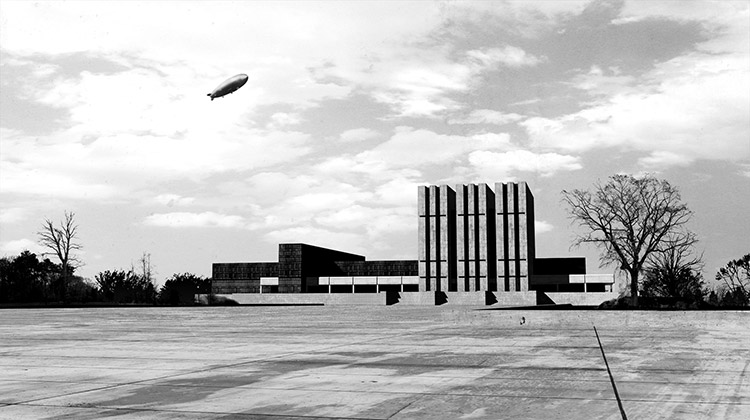
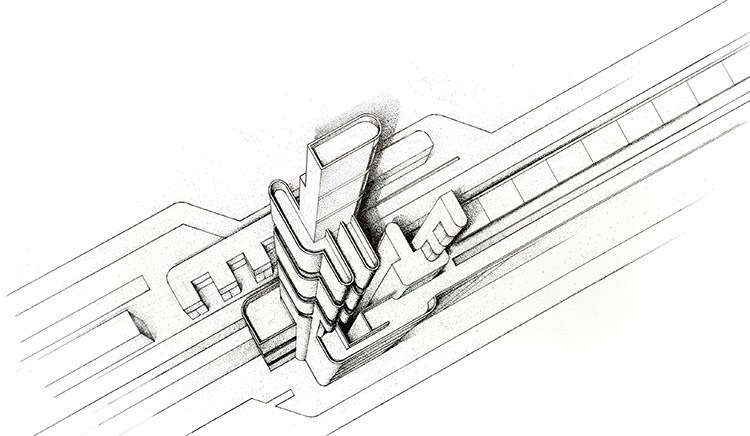
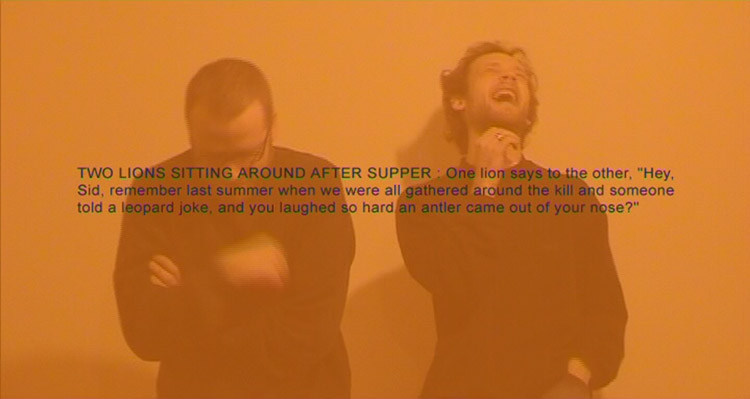
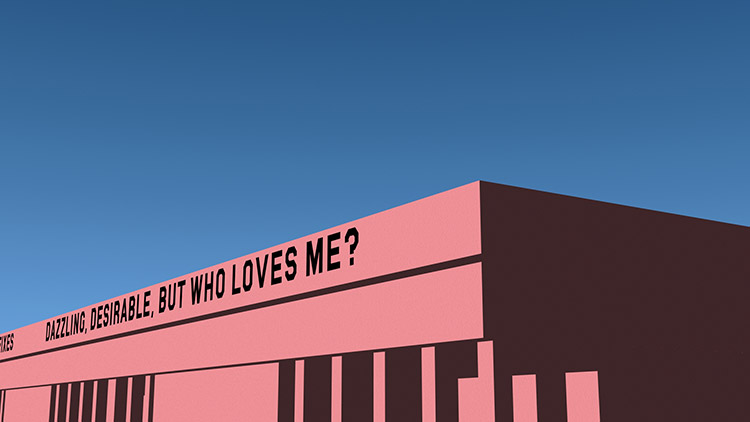
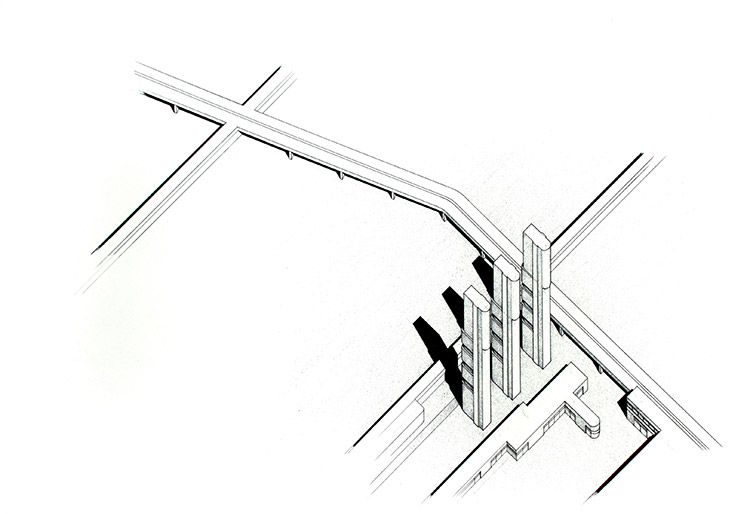
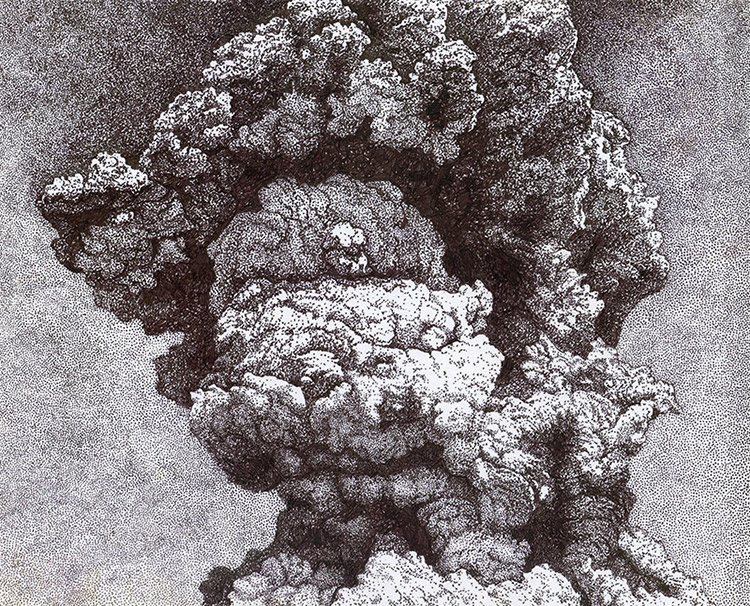
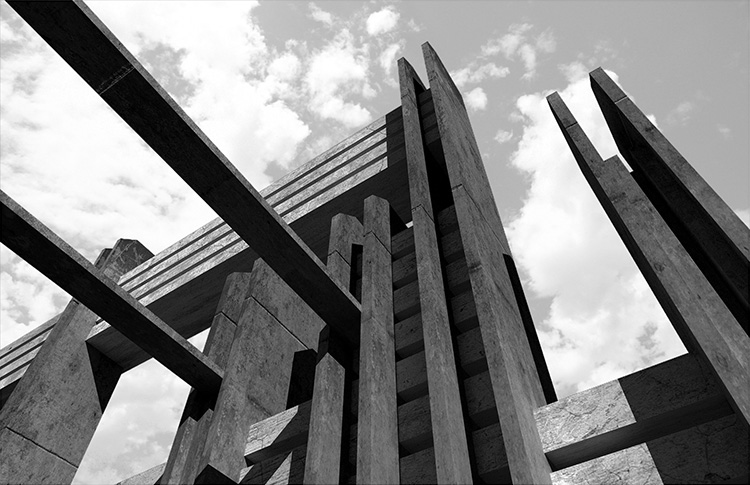
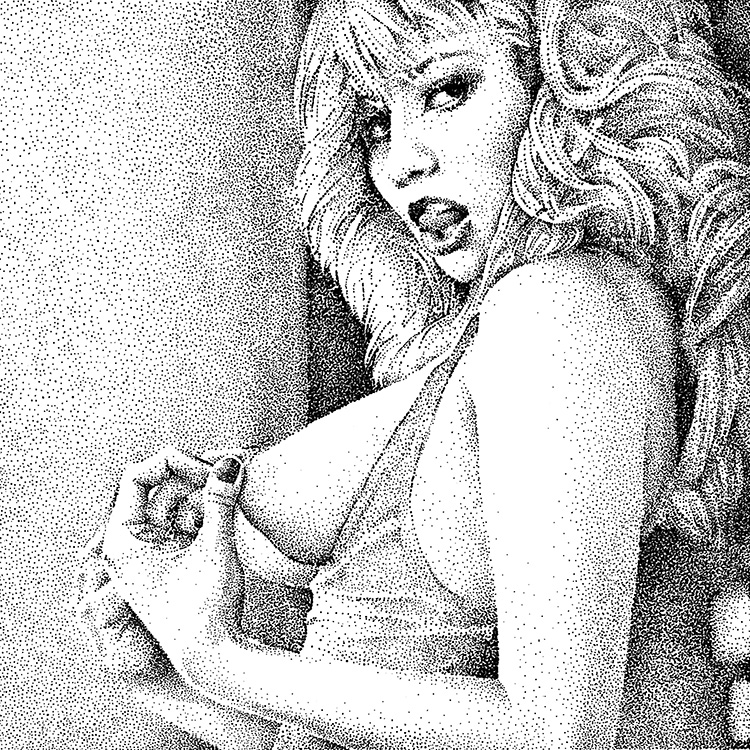
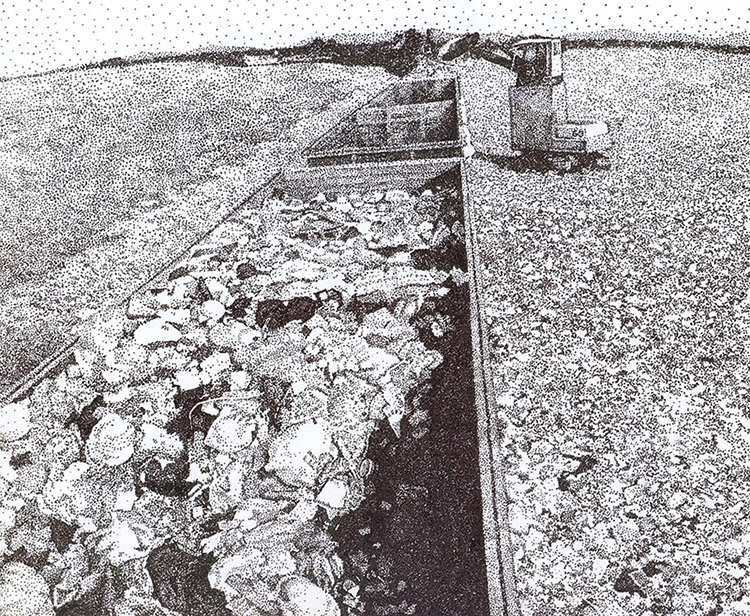
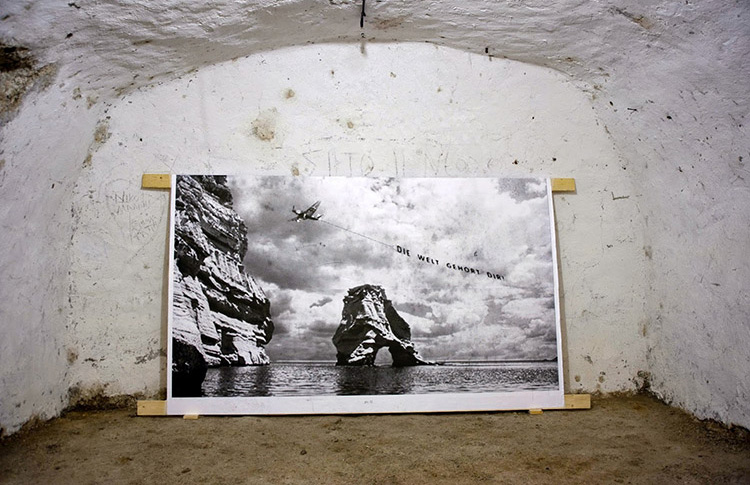
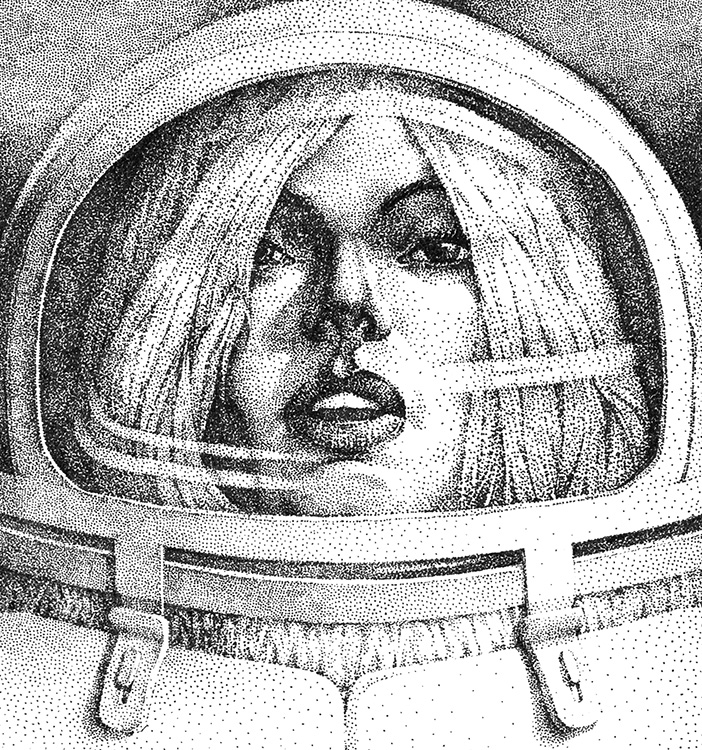
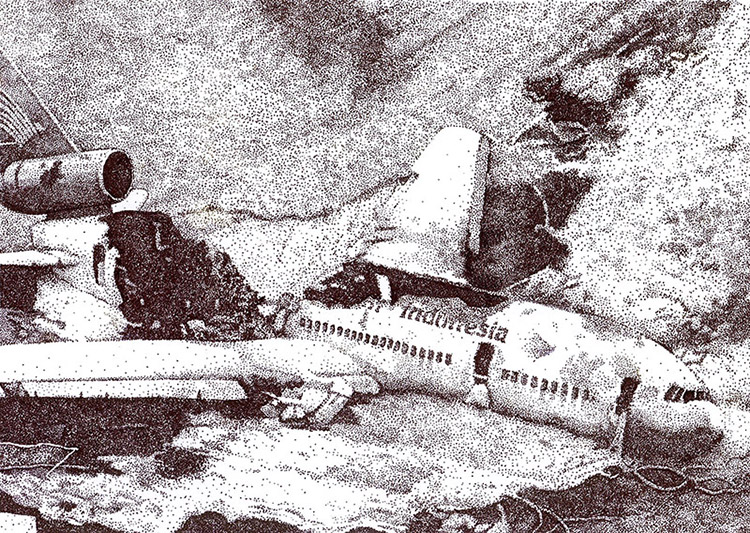
Sigmund Freud developed the notion of "das Unheimliche"/ "the Uncanny" a concept which remains central to this show and can be understood in reference to an occasion where something can simultaneously be familiar, yet foreign at the same time, resulting in a feeling of it being uncomfortably strange or uncomfortably familiar. Such is the woman in Michalis Zacharias` work, an imposing nude from the sci-fi erotic movie UltraFlesh, that stars a female alien who comes to earth to save the planet by curing its men of impotence. The work is drawn digitally and is composed by thousands of xxx, a mark that is extensively used for pornographic films to indicate "extra strong" material and in IT communication to warn other programmers of a problematic or misleading code.
Christina Androulidaki's comments on "UltraFlesh", taken from the press release concerning the "What Lies Hidden Remains Unfamiliar" exhibition, Remap 2013.

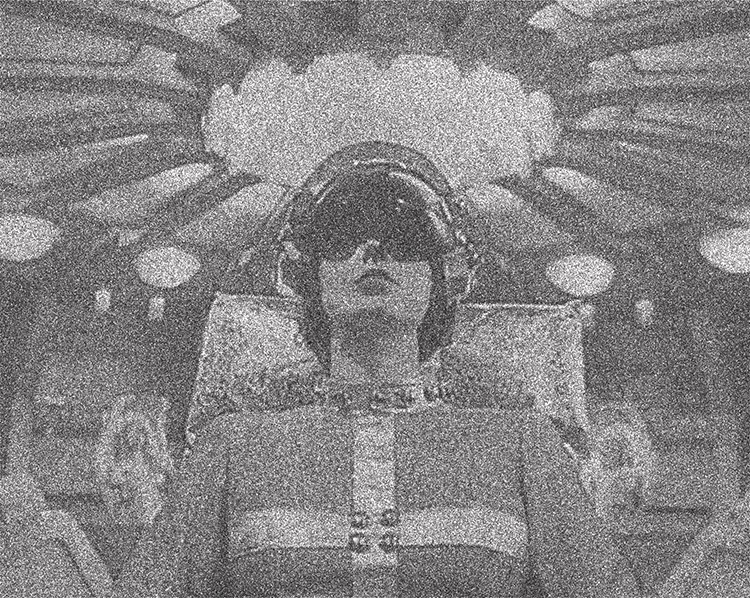
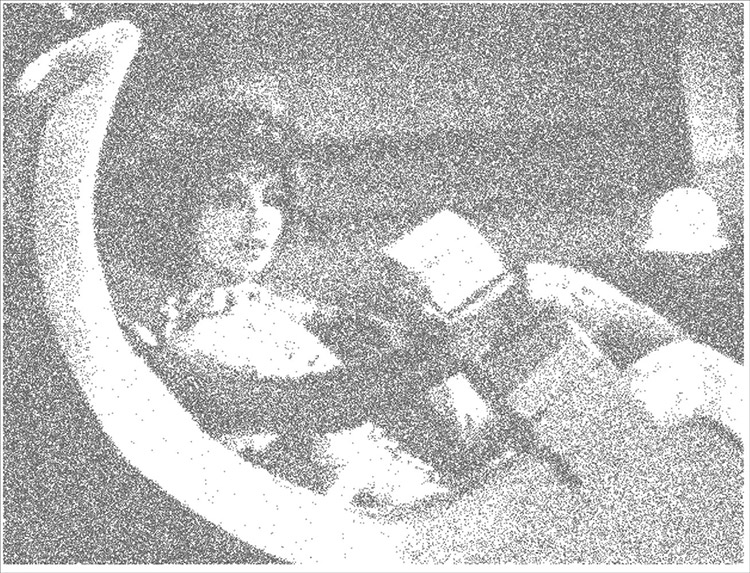

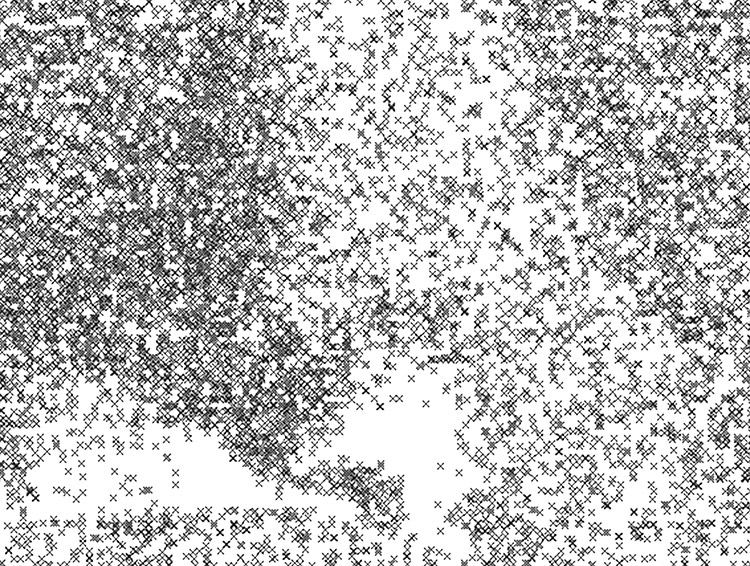
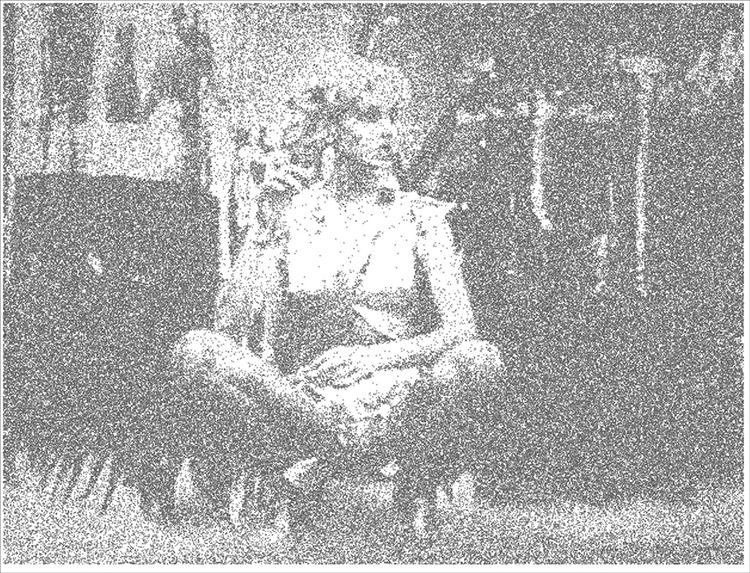
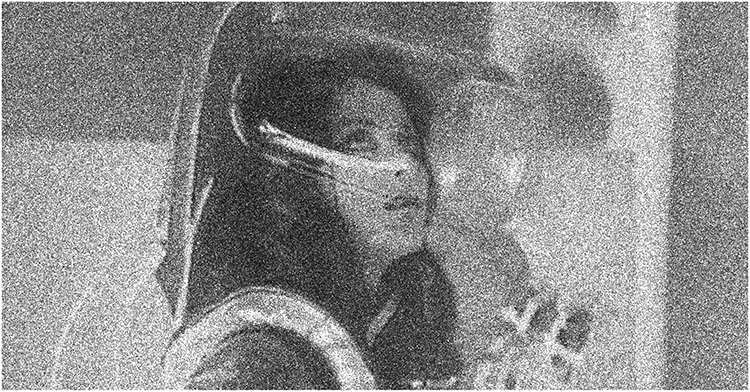
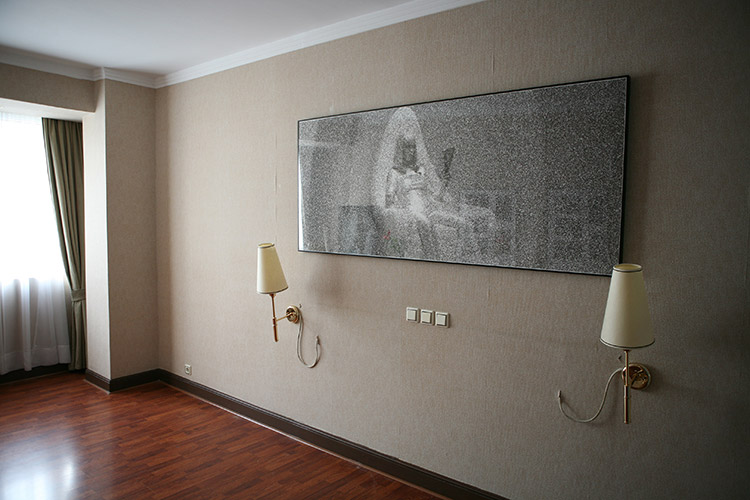
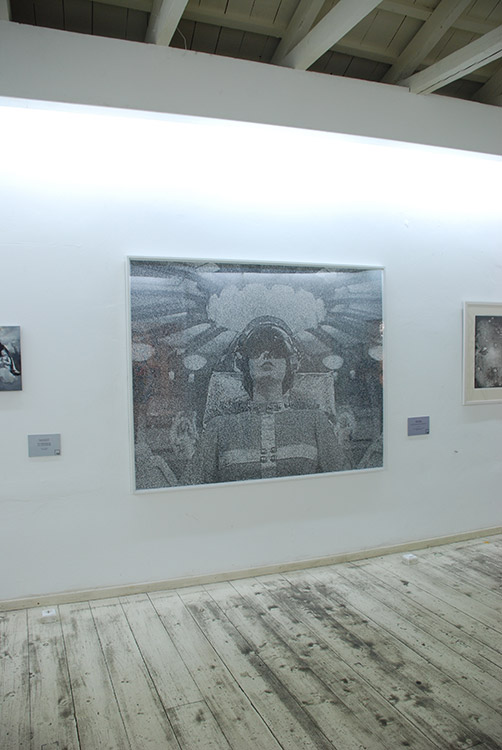
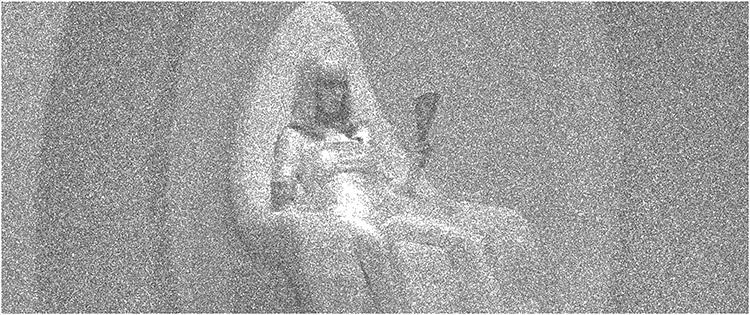
A few weeks ago here we talked about painterly pixelation in the work of (at least) a couple of artists here on artreview.com, and many beyond. Michalis Zacharias uses pixelation as it relates to its dot matrix, newsprint, and digital roots. Who knows how Zacharias translated an image, presumably of Gaza, into the abstract dot matrix of Gaza."
"Another outstanding work of his playing with pixelation-this time more in the style of newsprint images-is Cross VII, which might be an outright homage to Warhol's chilling Electric Chair (1965)."
James Westcott on Zacharias' work on his article "Roundup #5: The best artists on artreview.com this week" published on www.artreview.com